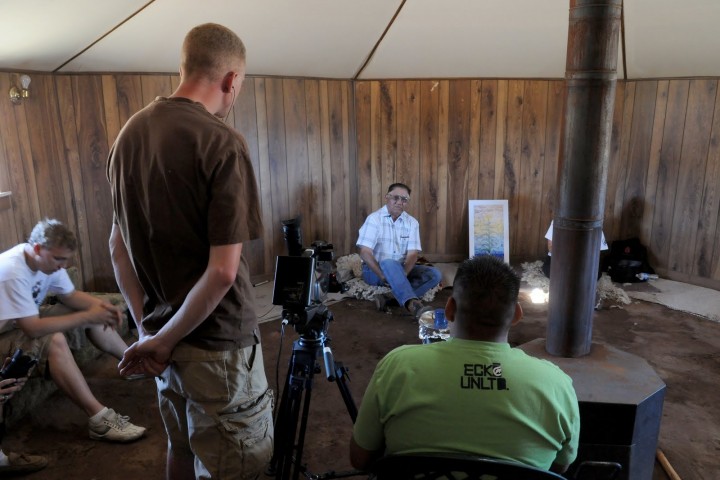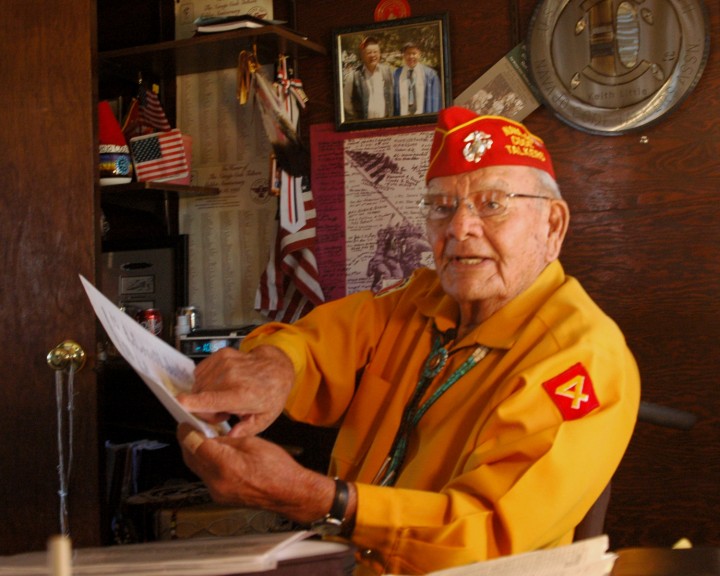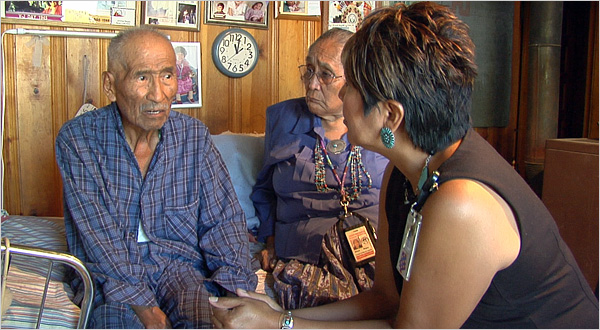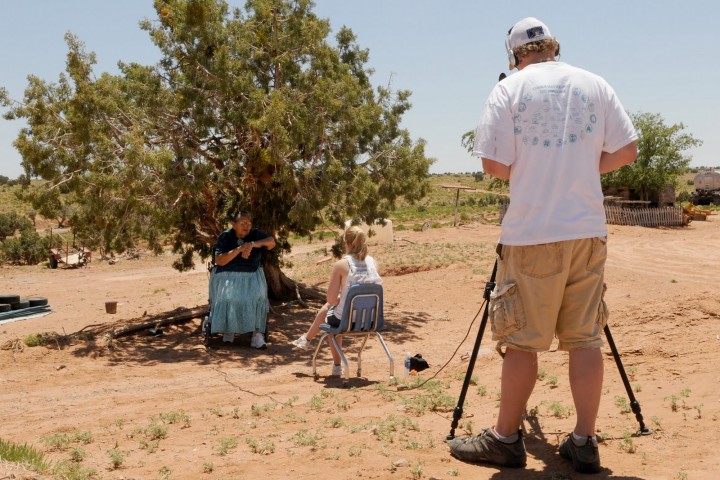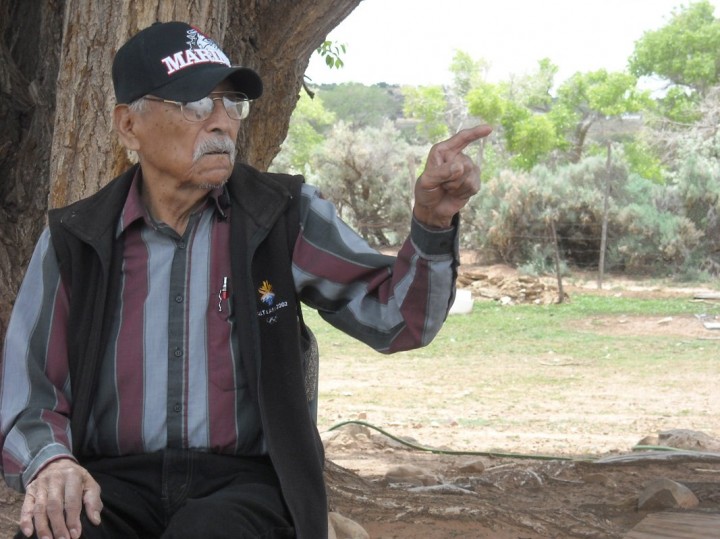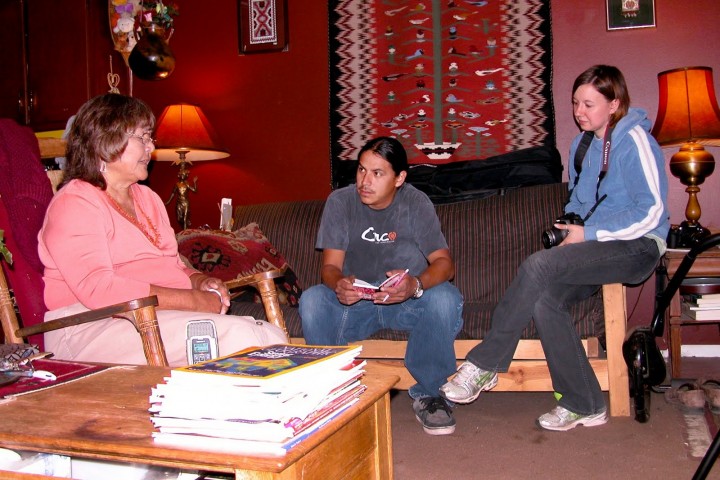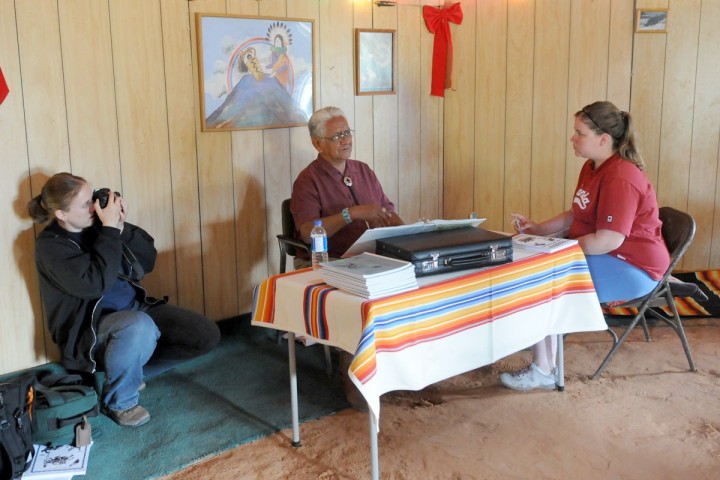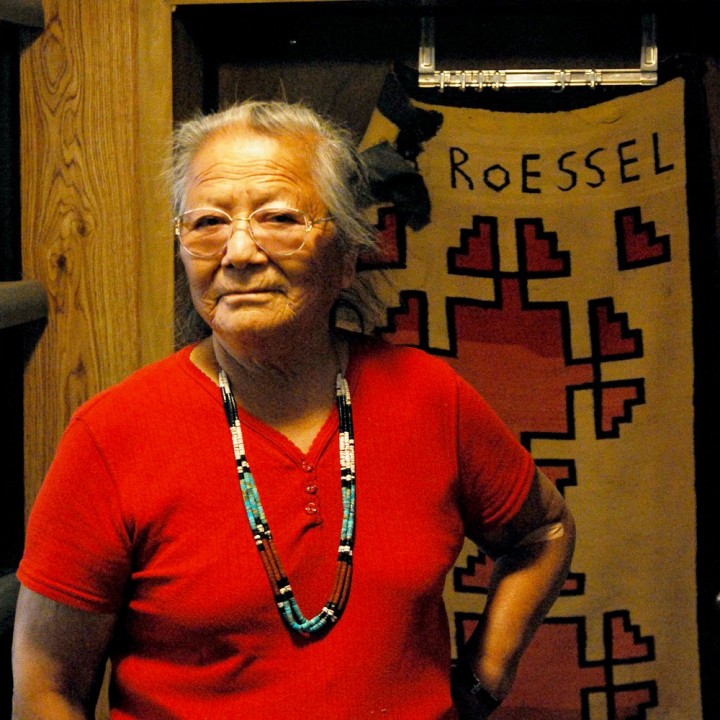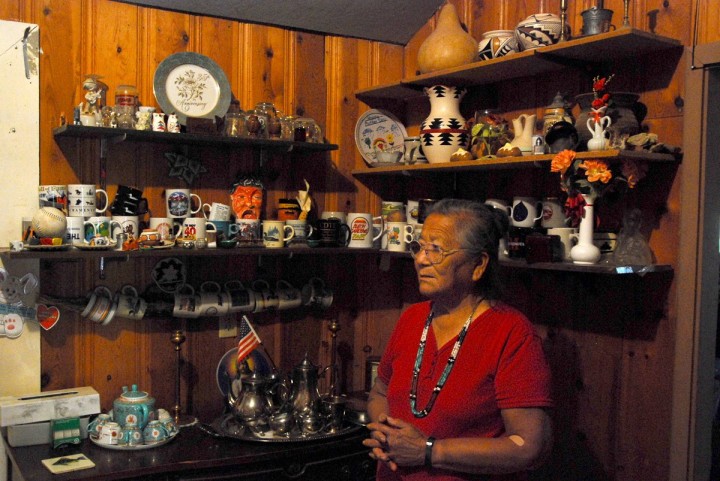Jack Jackson – Navajo-Retired State Legislator
Photo by Tom Grier/Navajo Oral History Project.
Jack Jackson Sr. lives in Navajo, New Mexico. After several years as an educator, Jack served nearly two decades in the Arizona State Legislature as a representative and senator.
Jack and his twin brother organized the All Indian Rodeo Cowboys Association. In recent years, Jack has served as a leader in the Cultural Affairs department at Diné College, and on the Board of Directors of the Diné Development Corporation.
Jack Jackson, Sr., is of the Kinyaa’áanii (Towering House) clan.
During the interview, Jack explained some details about the Navajo creation story and the importance of the cornstalk in Navajo culture. He shared a wealth of knowledge about the founding of Diné College and the vision for the institution as a way to serve the Navajo people, while helping maintain traditional Navajo ways.
Project completed by:
Josh Averbeck – WSU
Alexandria Fisher – WSU
Trevor Foster – DC
This documentary film was researched, photographed, edited and produced by students of Winona State University (Winona, Minnesota) and Diné College (Tsaile, Arizona, Navajo Nation) during summer 2011.
It contains stories Jack Jackson Sr. of Navajo, New Mexico, told the students during several hours of interviews about his life
This documentary film is archived at the Navajo Nation Museum, Navajo Nation Library, Winona State University Library, and Diné College Library, and will be archived at the Smithsonian Institution’s National Museum of the American Indian.
The film is part of the Navajo Oral History project, a multi-year collaboration between the Winona State UniversityMass Communication Department and Diné College– The official Tribal College of the Navajo Nation

